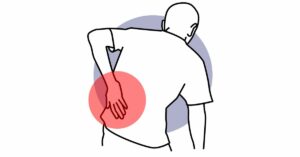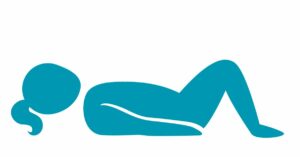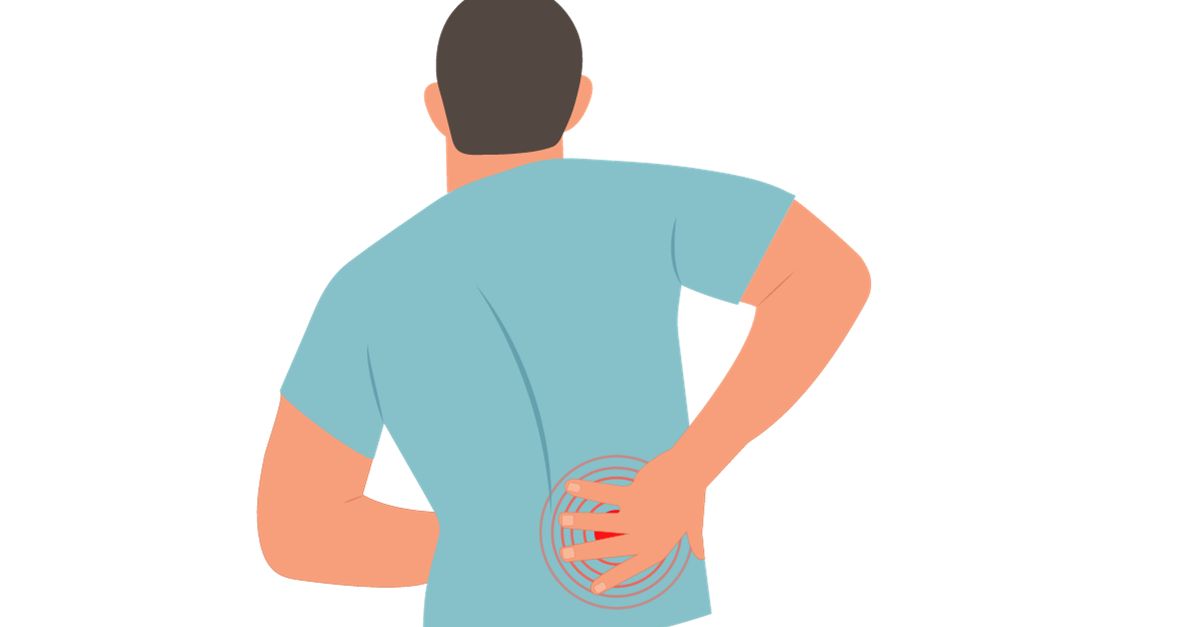Hey there, fitness enthusiasts and weekend warriors! We’ve all been there that moment when a seemingly routine squat exercise takes an unexpected turn, leaving your lower back feeling less than thrilled.
In this blog post, we’re diving into the world of what to do when you tweak your back while squatting.
Whether you’re a seasoned lifter or just starting your fitness journey, we’ve got your back (pun intended).
Let’s explore the steps, tips, and strategies to navigate this common setback and get you back in the game safely.
Working around with your lower back tweaked: Understanding What to do when you tweak your back squatting.
Okay, so, here are general suggestions for what to do if you’ve tweaked your lower back while squatting.
It’s important to prioritize your health and safety, so if you experience severe pain or your condition worsens, you should seek medical advice from a healthcare professional.
That said, here are some steps you can consider taking:
Stop Immediately: If you feel any discomfort or pain in your lower back while squatting, stop the exercise immediately. Continuing can potentially worsen the injury.
Assess the Severity: Determine the severity of the tweak. Is it a mild discomfort or more severe pain? If it’s severe, it’s crucial to seek medical attention.
Rest: Give your body time to heal. Rest is often the best initial treatment for a tweaked back. Avoid any activities that may aggravate the injury, including heavy lifting or intense workouts.
Ice: Applying ice to the affected area can help reduce inflammation and numb the pain. Use an ice pack wrapped in a cloth and apply it for 15-20 minutes every few hours during the first 48 hours after the injury.
Over-the-Counter Pain Relief: Non-prescription pain relievers like ibuprofen or acetaminophen may help with pain and inflammation.
Follow the recommended dosage and consult a healthcare professional if you have any concerns.
Gentle Stretching: Once the initial pain subsides, consider doing some gentle stretching exercises to improve flexibility and reduce muscle tension.
However, avoid any stretches that cause pain or discomfort.
Consult a Professional: If the pain persists or worsens after a few days, it’s essential to consult a healthcare professional, such as a physical therapist, chiropractor, or orthopedic specialist. They can diagnose the issue and provide a tailored treatment plan.
Rehabilitation and Strengthening: Depending on the diagnosis, you may be advised to engage in rehabilitation exercises to strengthen the muscles around your lower back and improve your posture. These exercises should be done under the guidance of a professional.
Proper Form: When you’re ready to resume squatting or any other exercise, ensure that your form is correct.
Poor form can lead to injuries. Consider working with a qualified fitness trainer to improve your technique.
Prevention: In the future, focus on injury prevention. Warm up properly before exercise, maintain good posture, and gradually increase the intensity of your workouts. Don’t push yourself too hard too quickly.
Remember, every back injury is unique, and what works for one person may not work for another.
Consult with a healthcare professional to develop a personalized plan for your recovery. Your safety and long-term well-being should be the top priorities.

Further Explanations.
Let’s dive deeper and elaborate further on all the points mentioned.
Firstly let’s delve into more detail on each of these steps for what to do when you tweak your lower back while squatting:
Stop Immediately:
When you feel discomfort or pain in your lower back during a squat, it’s essential to cease the exercise immediately. Continuing to squat or perform strenuous movements can potentially worsen the injury.
The reason for stopping is to prevent further strain or damage to the affected area. Pushing through the pain may lead to more significant problems and a longer recovery time.
Assess the Severity:
After stopping, take a moment to assess the severity of the discomfort or pain in your lower back.
Is it a mild discomfort, a sharp pain, or something in between? Understanding the level of pain is crucial for determining the appropriate course of action.
If the pain is severe, radiates down your legs, or is accompanied by other concerning symptoms like numbness or weakness, it’s crucial to seek immediate medical attention. These could be signs of a more serious injury, such as a herniated disc.
Rest:
Rest is a critical initial treatment for a tweaked back. It allows your body to begin the healing process naturally.

During the initial phase, it’s best to avoid any activities that may aggravate the injury. This includes refraining from heavy lifting, intense workouts, or any movements that cause pain.
Gentle movements, like walking or light stretching (if they don’t worsen the pain), may help to prevent stiffness but should be done cautiously.
Ice:
Applying ice can be helpful in reducing inflammation and numbing the pain in your lower back.
Use an ice pack wrapped in a thin cloth or towel to prevent direct contact between the ice and your skin, which can lead to frostbite.
Apply the ice pack to the affected area for about 15-20 minutes every few hours during the first 48 hours after the injury. This frequent application helps manage inflammation effectively.
Never apply ice directly to the skin, and always allow your skin to return to its normal temperature before reapplying ice.
Over-the-Counter Pain Relief:
Non-prescription pain relievers like ibuprofen (e.g., Advil) or acetaminophen (e.g., Tylenol) can help manage both pain and inflammation associated with a tweaked lower back.
Follow the recommended dosage instructions on the medication label, and do not exceed the recommended dose. Avoid alcohol when taking these medications.
If you have any underlying medical conditions or are taking other medications, consult a healthcare professional or pharmacist to ensure that these over-the-counter medications are safe for you to use.
Gentle Stretching:
Once the initial pain and inflammation begin to subside, gentle stretching exercises can help improve flexibility and reduce muscle tension in the affected area.
Focus on gentle, slow stretches that target the muscles around the lower back without causing pain or discomfort. Avoid any stretches that worsen your symptoms.
Examples of gentle stretches for the lower back include the knee-to-chest stretch or cat-cow stretches from yoga. Hold each stretch for about 15-30 seconds, and repeat them a few times.
It’s crucial to listen to your body. If a stretch causes pain, stop immediately and consult with a healthcare professional.
Consult a Professional:
If your lower back pain persists or worsens after a few days of rest and self-care, it’s crucial to seek the expertise of a healthcare professional.
Professionals who can help include physical therapists, chiropractors, or orthopedic specialists. These individuals have the training and experience to diagnose the issue accurately.
Once the cause and severity of your back issue are identified, they can provide a tailored treatment plan, which may include specialized exercises, manual therapy, or other interventions.
Rehabilitation and Strengthening:
Depending on the diagnosis, you may be advised to engage in rehabilitation exercises to address the underlying issues and strengthen the muscles around your lower back.
These exercises are often designed to improve flexibility, stability, and muscle strength, which can help prevent future injuries.
Rehabilitation exercises should be done under the guidance of a healthcare professional or physical therapist to ensure you’re using the correct form and intensity for your specific condition.
Proper Form:
Proper form is crucial for preventing injuries during exercises like squats. Poor form can put unnecessary stress on your lower back and increase the risk of tweaks or more severe issues.
When you’re ready to resume activities like squatting, it’s essential to ensure that your form is correct. This includes maintaining a neutral spine, engaging your core, and using proper technique.
Consider working with a qualified fitness trainer or coach who can assess and correct your form to reduce the risk of future injuries.
Prevention:
Preventing future back injuries is essential for long-term health and fitness.
Warm-up properly before exercise to prepare your muscles and joints for the activity. Incorporate dynamic stretches and movements to increase blood flow and flexibility.
Maintain good posture throughout your daily activities, as poor posture can contribute to back problems over time.
Gradually increase the intensity of your workouts to give your body time to adapt to higher loads and reduce the risk of sudden strain.
Listen to your body and don’t push yourself too hard too quickly. Adequate rest and recovery are essential components of injury prevention.
By following these steps, you can not only manage a tweaked lower back effectively but also take measures to prevent future injuries.
Remember that individual responses to treatment and prevention strategies may vary, so it’s important to work closely with healthcare professionals and fitness experts to tailor your approach to your specific needs and circumstances.
A tabular on this topic.
Here’s a tabular summary of what to do when you tweak your back while squatting:
| Step | Description |
|---|---|
| 1. Stop Immediately | Cease the squatting exercise if you feel discomfort or pain in your lower back to prevent further injury. |
| 2. Assess the Severity | Evaluate the severity of the pain to determine if it’s mild or severe; seek medical attention for severe pain. |
| 3. Rest | Give your body time to heal by avoiding activities that may worsen the injury, such as heavy lifting or intense workouts. |
| 4. Ice | Apply ice wrapped in a cloth for 15-20 minutes every few hours during the first 48 hours to reduce inflammation and numb pain. |
| 5. Over-the-Counter Pain Relief | Consider non-prescription pain relievers (e.g., ibuprofen or acetaminophen) following recommended dosages. |
| 6. Gentle Stretching | After the initial pain subsides, engage in gentle stretching exercises to improve flexibility, avoiding stretches that cause pain. |
| 7. Consult a Professional | If pain persists or worsens after a few days, seek the expertise of a healthcare professional for diagnosis and tailored treatment. |
| 8. Rehabilitation and Strengthening | Follow rehabilitation exercises and strengthening routines under professional guidance to address the issue and prevent future injuries. |
| 9. Proper Form | Ensure correct form when resuming exercises like squats; consider working with a fitness trainer to improve technique. |
| 10. Prevention | Focus on injury prevention by warming up, maintaining good posture, and gradually increasing workout intensity while avoiding overexertion. |
Please remember that this table provides a structured overview of the steps to take when you tweak your back while squatting, but it’s important to consult with healthcare and fitness professionals for personalized guidance based on your specific situation.
Conclusion.
In conclusion, if you experience a lower back tweak while squatting, immediate action is essential.
Stop the activity, assess the severity of the pain, and prioritize rest. Apply ice, consider over-the-counter pain relief cautiously, and engage in gentle stretching once the initial pain subsides.
If the issue persists, consult a healthcare professional for a proper diagnosis and treatment plan. Focus on rehabilitation, proper form, and injury prevention to ensure long-term back health and fitness.

Hey there, it’s Mike Rrsq, the Editor-in-Chief over at Jsquat.com, and I’m absolutely obsessed with all things squat fitness! I’ve been lucky enough to get some serious recognition for my work in this field. With a solid background in the fitness and wellness industry, I’ve been there right from the get-go, helping shape this website into what it is today.
You see, I’m not just the boss around here; I’m also a passionate contributor. I love sharing my insights through my articles, and trust me, they’re not your run-of-the-mill stuff. Each piece I write is a labor of love, filled with my expertise and real-world experience in the fitness universe. So, if you’re into fitness and looking for some inspiration, you’re in the right place!

